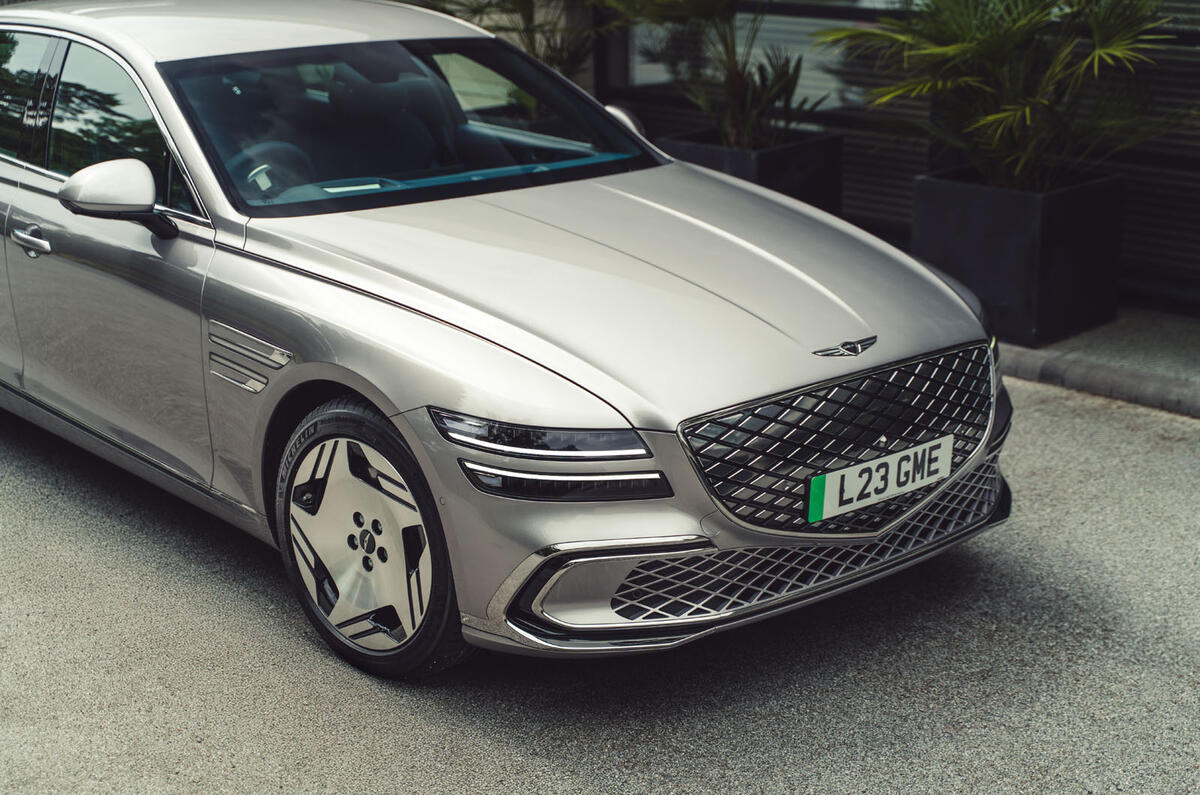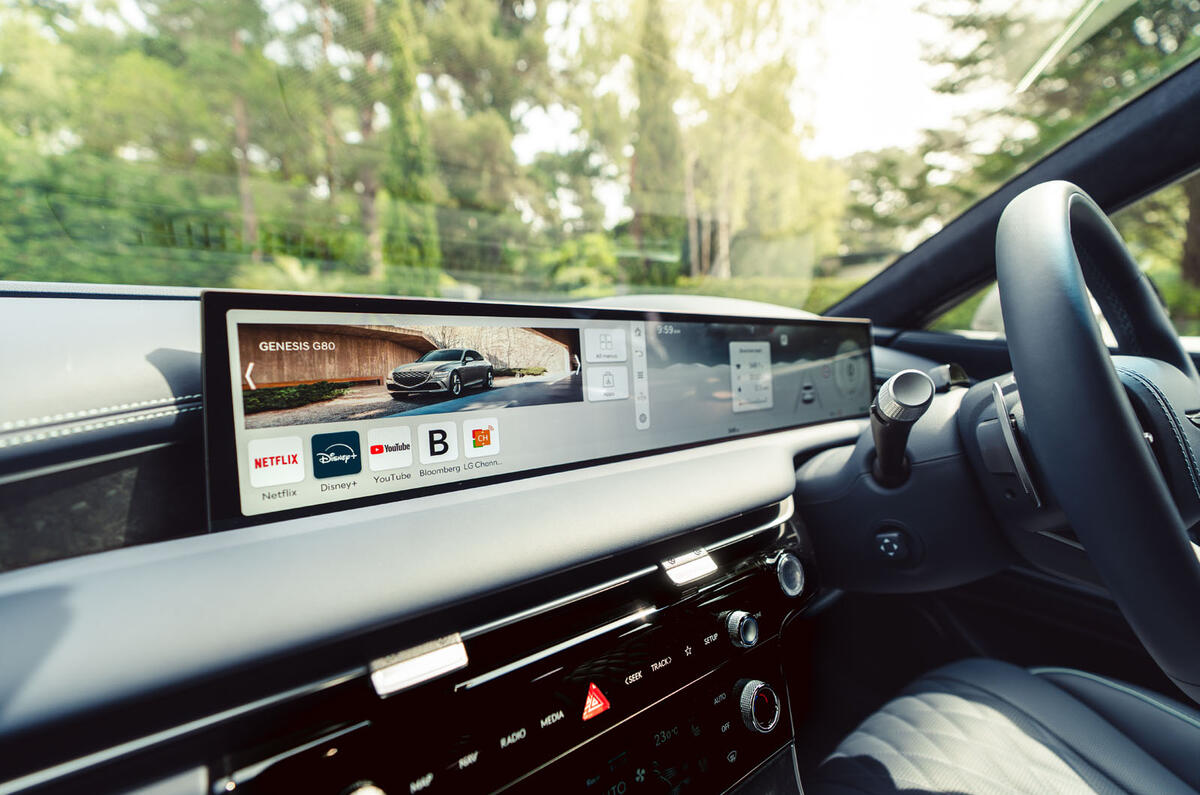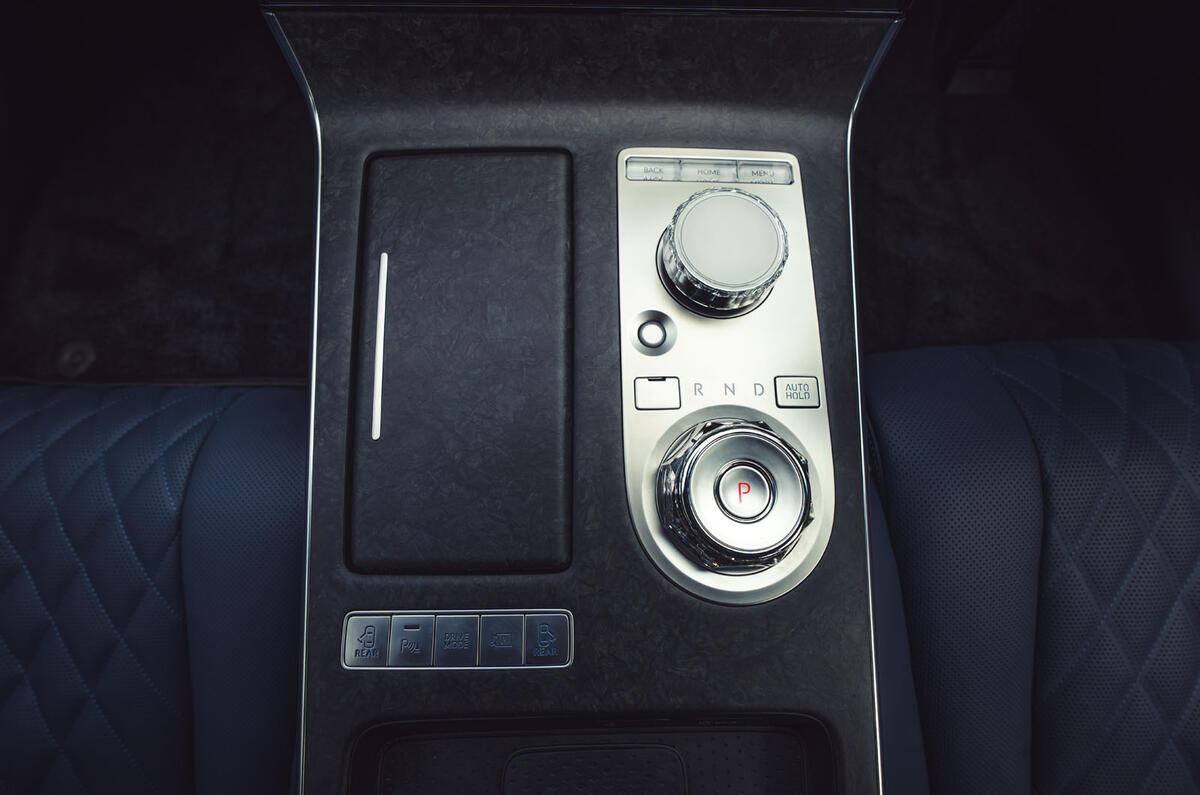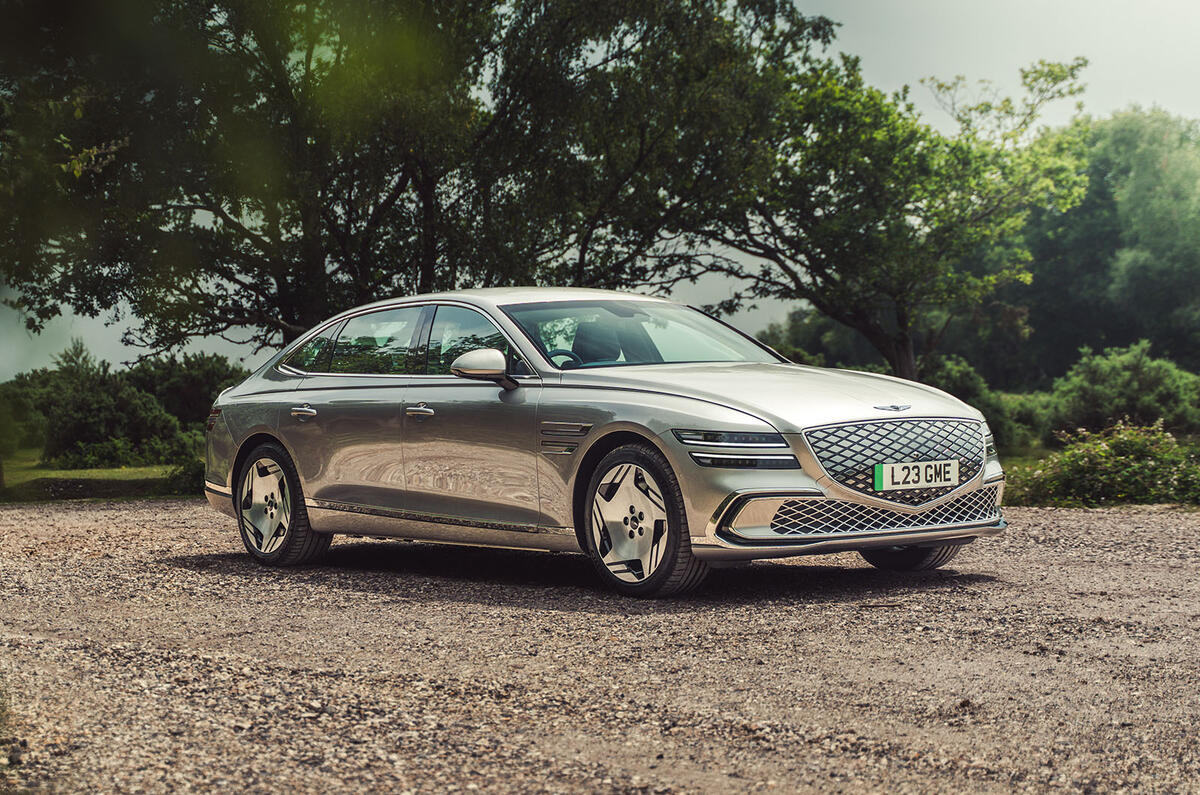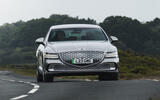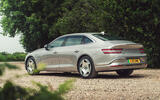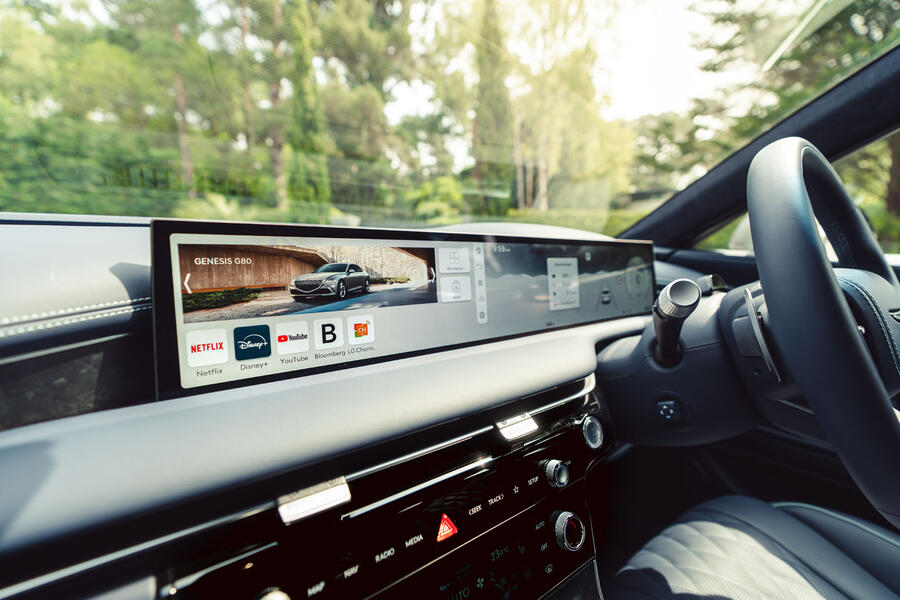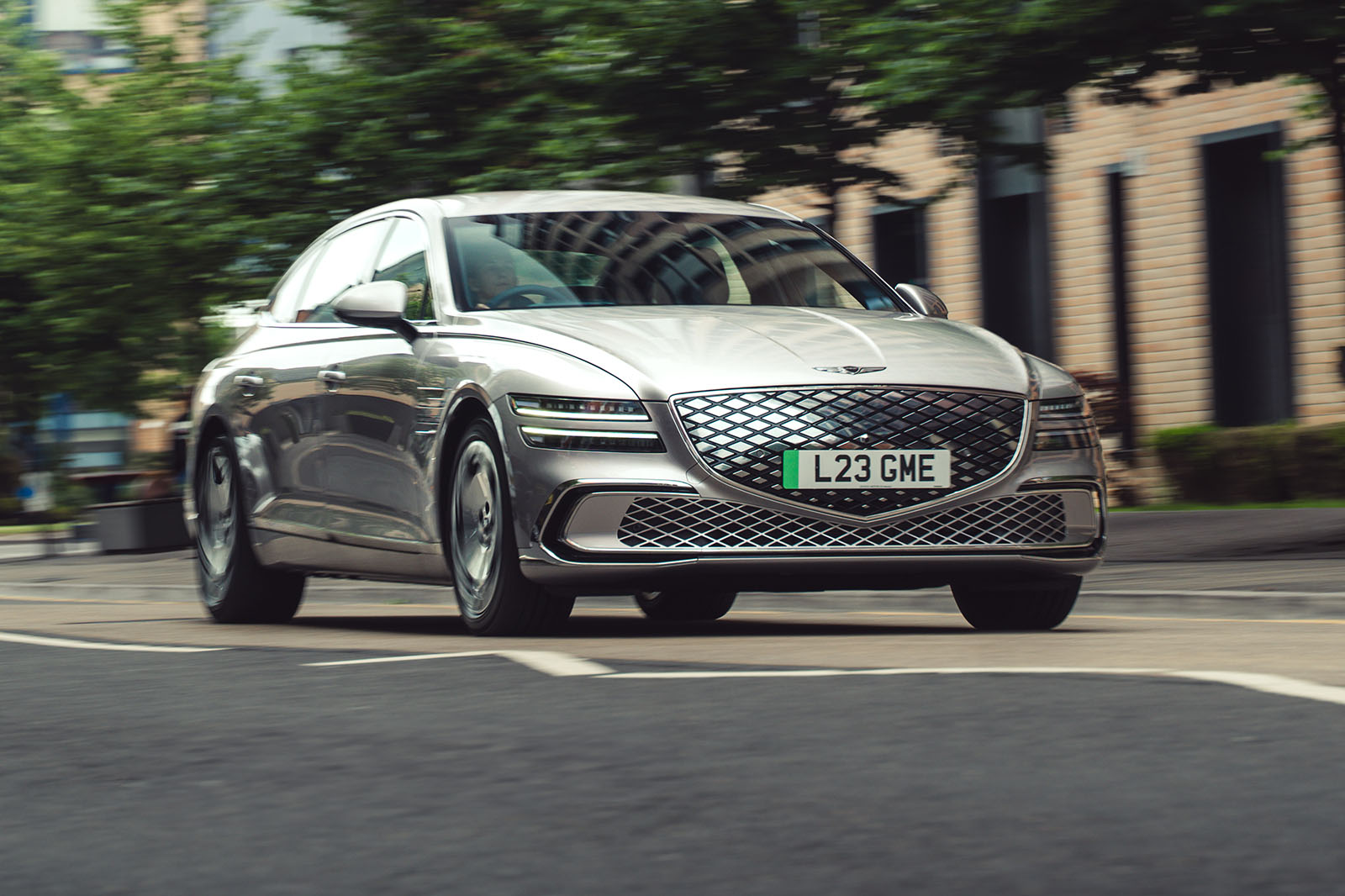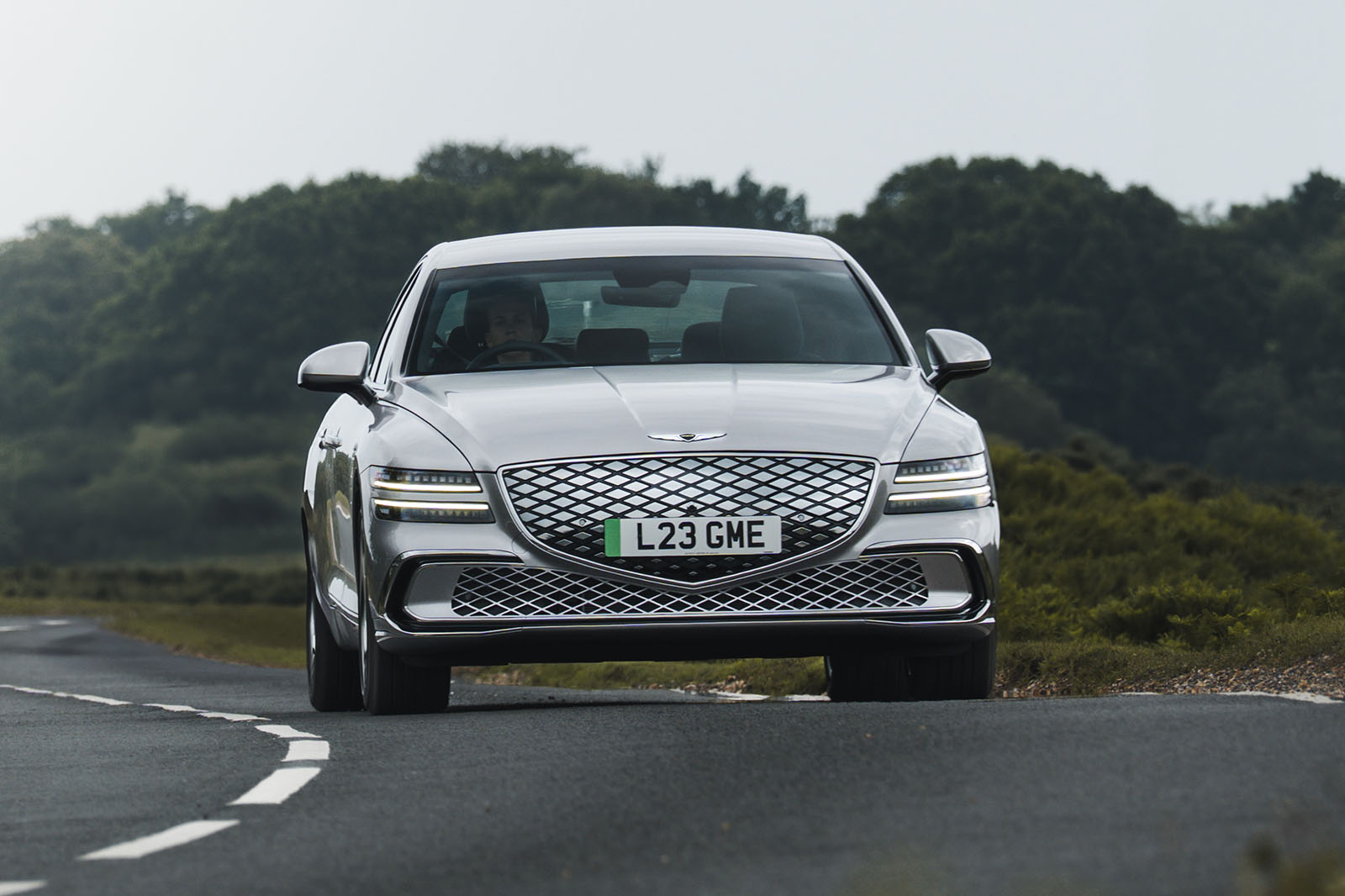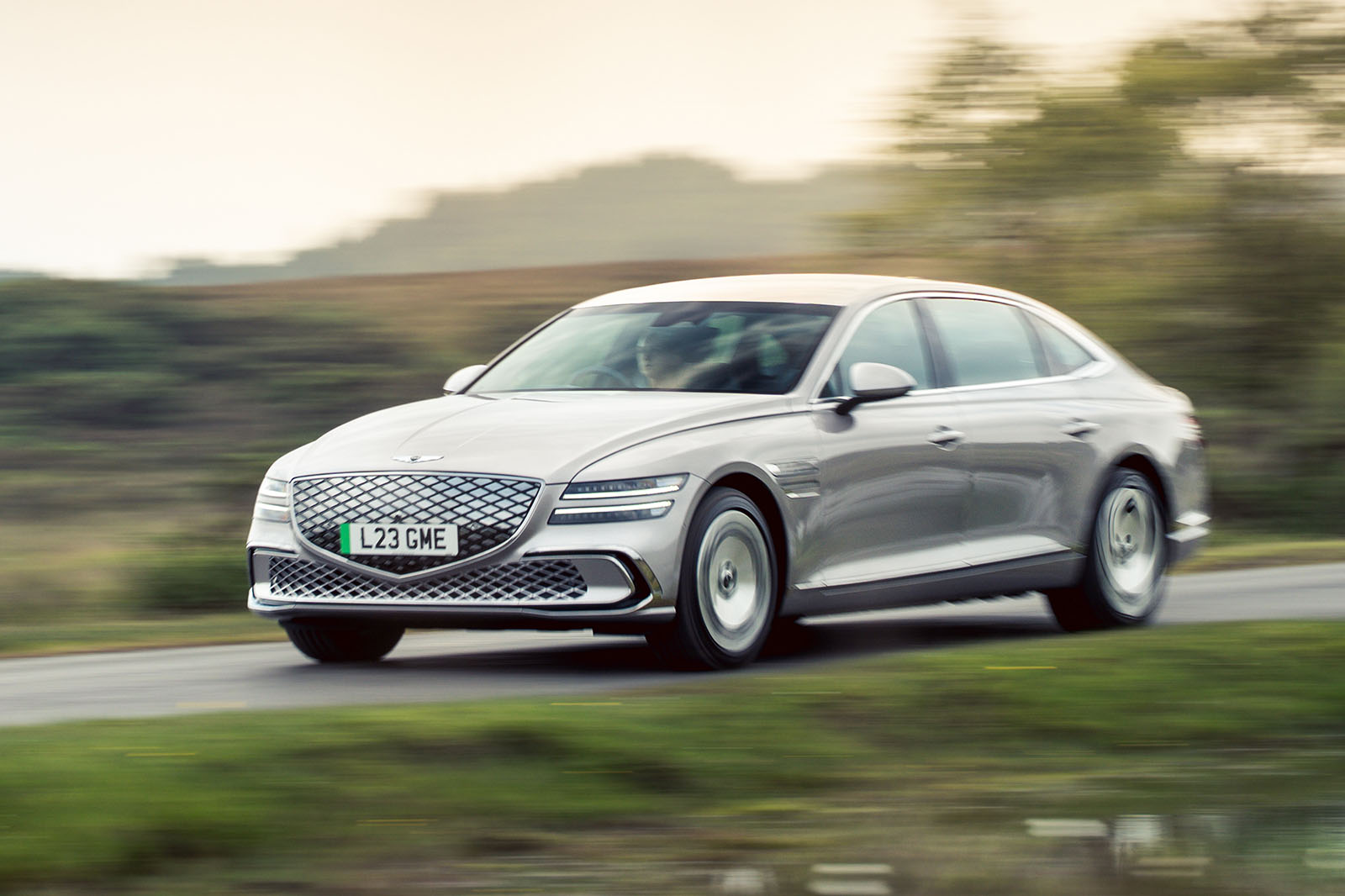For the first five yards of my test of the latest Genesis Electrified G80, the Korean marque’s EV flagship now offered with a bigger battery and a longer wheelbase, I wasn’t even behind the wheel.
The car was tightly parked between two others, so we rolled it forwards to an accessible position by controlling it purely on the key. It’s simple; with practice you can even parallel park the G80 into a space it chooses. It’s a big car, and fairly wide, so it’s easy to see this capability working well for some owners, especially those with tight-fitting garages at home.
Remote parking is just one of a significant number of comprehensively rethought features in the Electrified G80 (as its maker cumbersomely chooses to call it). This time last year the car seemed to be heading for the exit door; Genesis would only sell it to special order. This was not a sign of the model being ditched, though, but that an improved 2025 edition was coming – for sale through the Hyundai dealers Genesis has now decided to adopt.




